|
|
Post by Lee Martin on Jan 19, 2016 20:23:06 GMT -5
Velocity Spreads & Node Tuning ________________________________ Earlier I revealed that BR shooters don’t focus on extreme spreads. This may surprise some of you so I thought I’d explain. The goal in load tuning is to time bullet exit with the slowest point of deflection. Because barrels primarily vibrate in a vertical plane we’re aiming for the top or bottom peaks. Areas in-between show directional change and fast harmonics. Sometimes a low ES combination places exit in between sine wave transition; this usually leads to increased vertical. Below you’ll see how a load can fluctuate by 45 fps and still reside on an up node. A heavier charge may cut that spread by a third yet put exit at the wave centerline. [note - in this graph time moves right-to-left on the x-axis. Dwell is always longer for lower speeds] 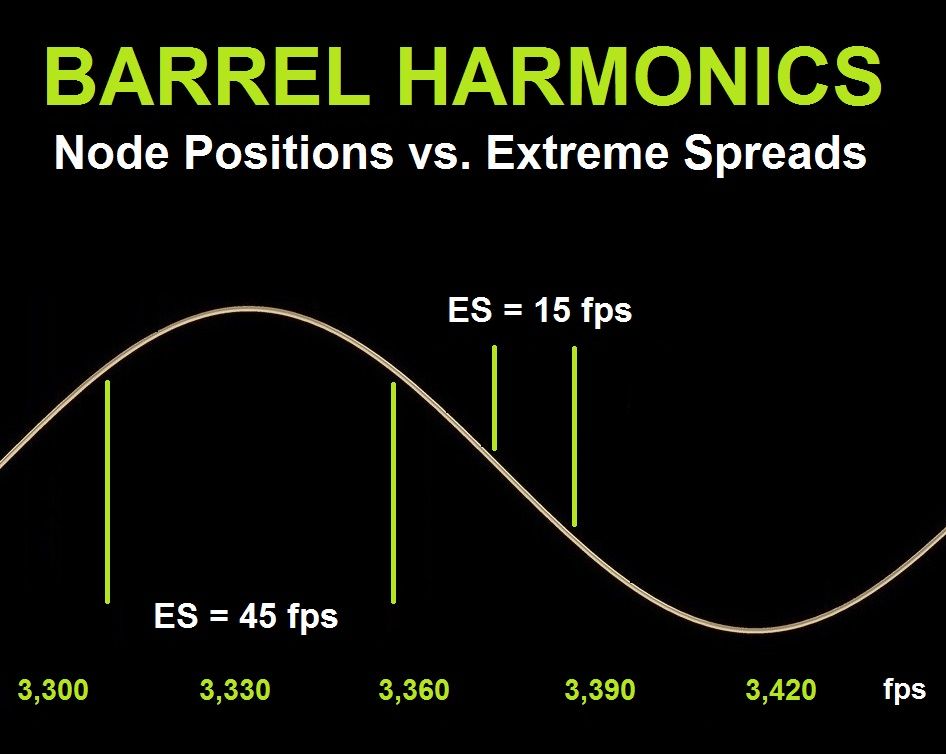 A simple illustration but one that shows why we tune on targets and not chronographs. -Lee www.singleactions.com"Chasing perfection five shots at a time" |
|
joej
.30 Stingray
 Enter your message here...
Enter your message here...
Posts: 352
|
Post by joej on Jan 20, 2016 0:01:20 GMT -5
Lee - I was also taught to tune the rifle on targets but once tuned - shot that load over a chronograph and recorded the velocity, so when you ran out of that powder lot - you just purchased another 16#'s of a different lot and loaded at the bench tweaking the previous culver powder setting until you achieved that previously recorded velocity and 9 times out of ten you had the same group size. Took maybe 2 to 4 rounds to get back into the money.
|
|
|
|
Post by Lee Martin on Jan 27, 2016 22:52:04 GMT -5
Random Benchrest History - Part I _________________________________________ A short piece on the history of fiberglass stocks by the late Chet Brown: 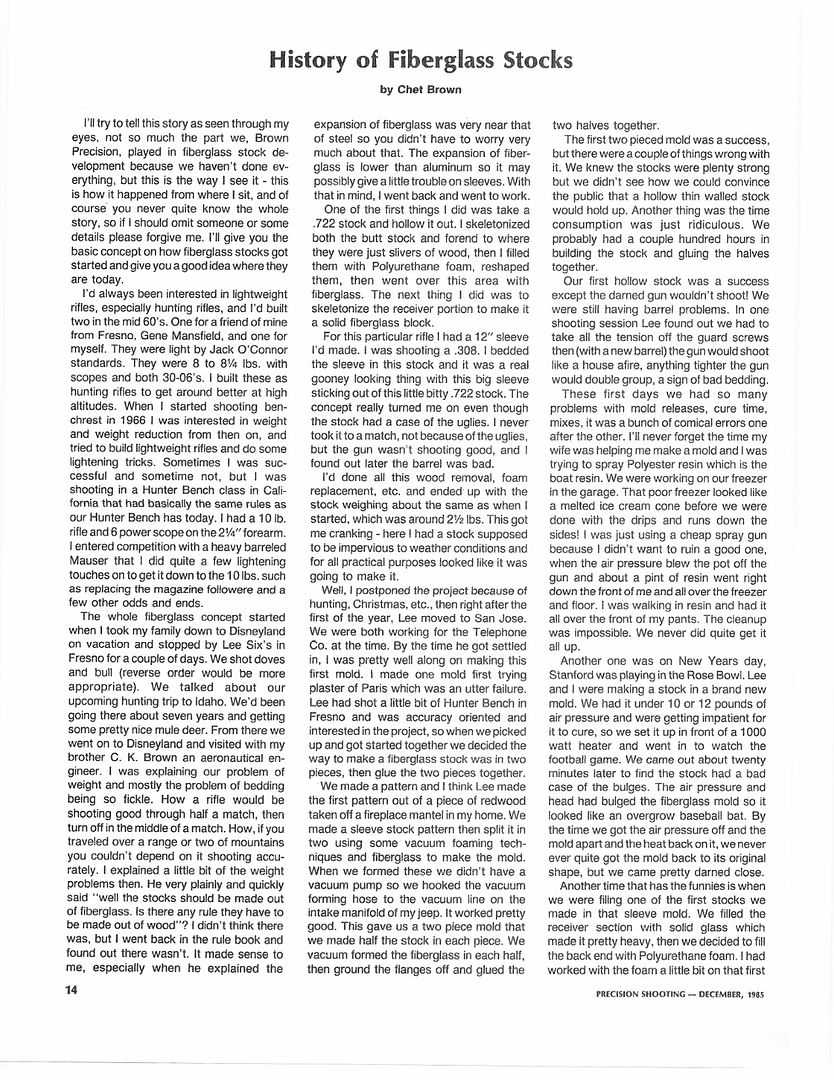 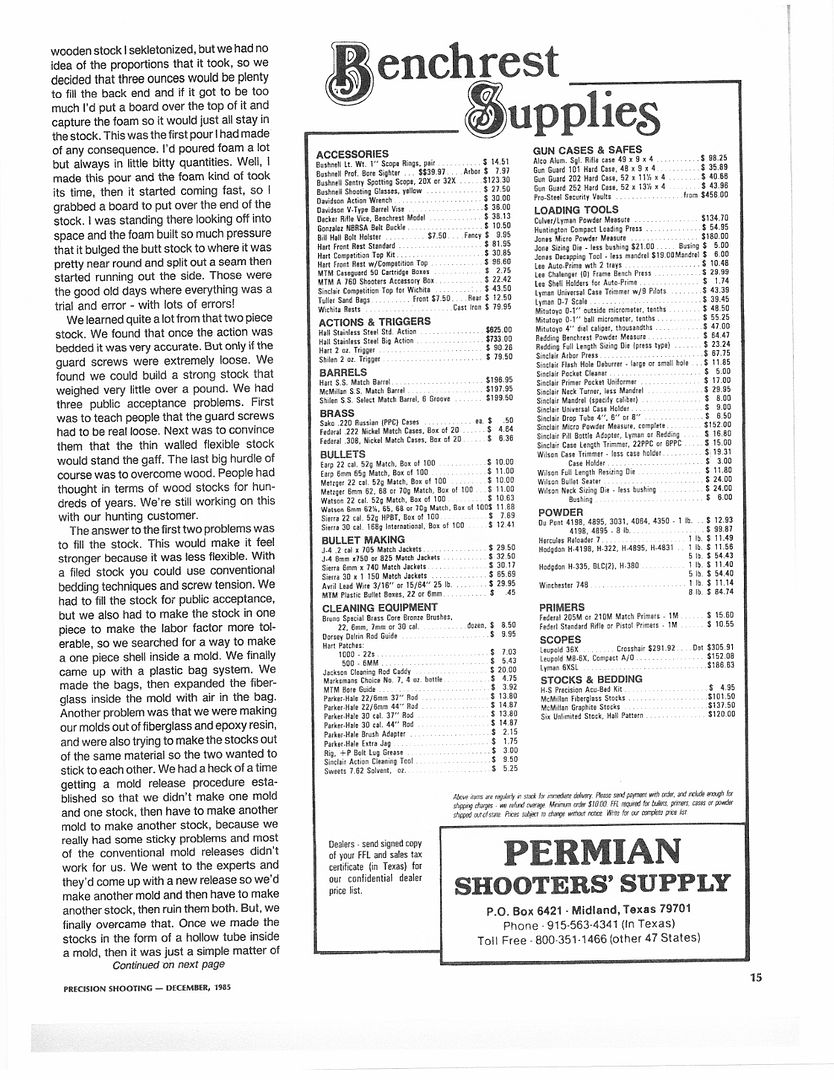  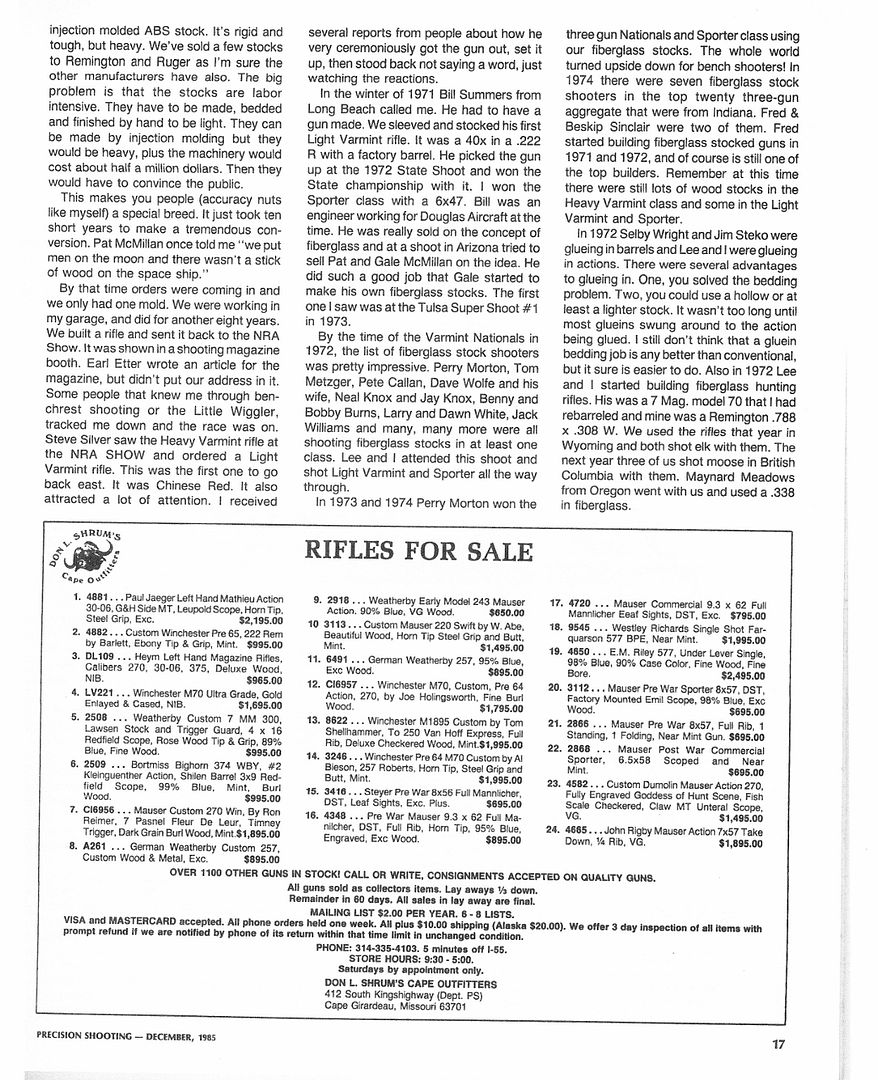 -Lee www.singleactions.com"Chasing perfection five shots at a time" |
|
|
|
Post by Lee Martin on Jan 28, 2016 18:54:18 GMT -5
Bullet Making ___________________________ The second phase of my benchrest journey is underway…  After purchasing a few thousand of Bart Sauter’s 0.820” 6mm jackets I decided to get into bullet making: 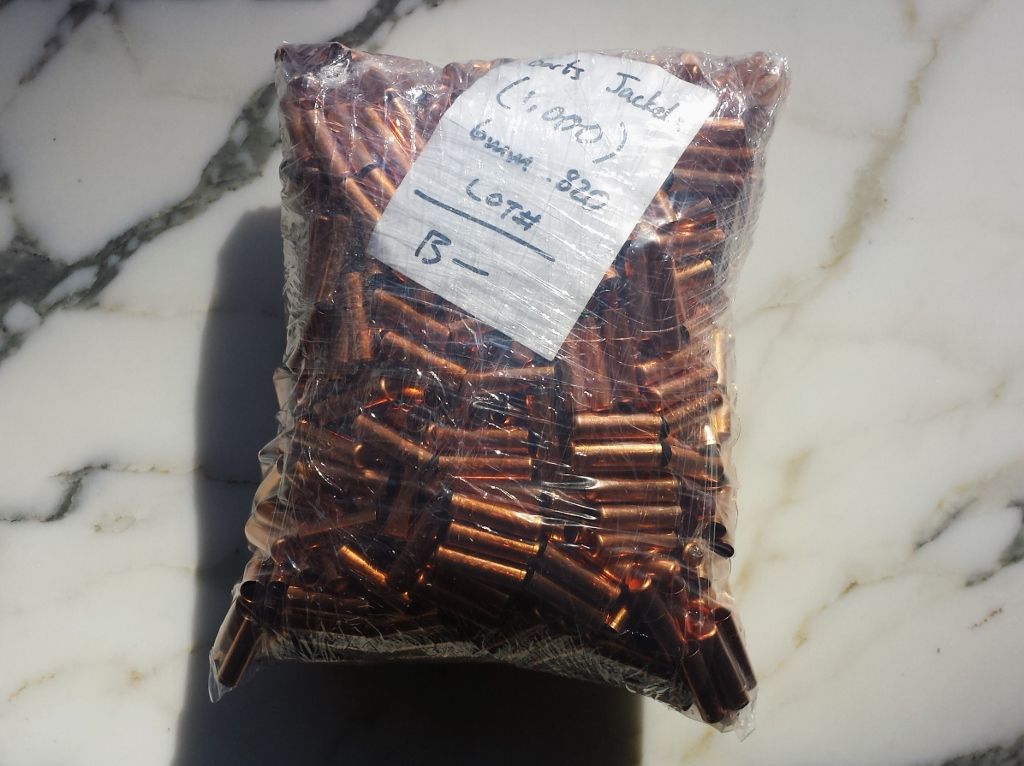 The learning curve is steep, the start-up cost is considerable. But I’m really looking forward to producing a 66 – 68 gr flat-base pill. The key to high precision is the right set of dies. And in BR competitive dies come from Bill Niemi, George Ulrich, and Dave Detsch. I went with Ulrich and ordered a 8.5 straight ogive to include the core swager, core seater, and point former. All are cut from carbide as opposed to steel. While the latter are fine for a few hundred thousand bullets, carbide lasts into the millions and they hold their value. George will provide the dies along with a swaging press. I’ll source a core cutter elsewhere since he doesn’t carry them. Initially the goal is to make these for family and friends. If they fly right we’ll see where it leads. Everything is supposed to arrive in April so stay tuned. I’ll document the process A to Z; and trust me, it’s involved. The prep & cleaning required to produce a competitive bullet is heavy. -Lee www.singleactions.com"Chasing perfection five shots at a time" |
|
|
|
Post by cherokeetracker on Jan 28, 2016 19:42:34 GMT -5
I do hope that your set up is going to be using hydraulic presses. When I checked into this several years ago, It did not take much investigation into it, to discover that I wanted to stay away from any manual operations. I seem to always want to speed things up a bit too, So it seemed to me that I should have a minimum of three presses, Via hydraulic operation. That does not speed anything up. from what I have understood time is about the same. Saving some elbow grease was the main thing.
But whatever way you go I am looking forward to this. Once you start getting over the learning curve, I think it is really going to be interesting.
Charles
|
|
|
|
Post by Markbo on Jan 28, 2016 22:15:46 GMT -5
Wowzers. You are an amazing fellow Lee.
|
|
ProGun
.30 Stingray

Posts: 246
|
Post by ProGun on Jan 29, 2016 11:41:12 GMT -5
Good for you. It's a scary industry to enter into nowadays... but I ain't chicken neither! That's my dream small business- Make money and never run out of ammo!
If only we could crack the code on making .22 LR...
|
|
|
|
Post by Markbo on Jan 29, 2016 21:32:19 GMT -5
Just costs money. Get all the machinery and start cranking!
|
|
|
|
Post by Lee Martin on Feb 2, 2016 19:13:37 GMT -5
I do hope that your set up is going to be using hydraulic presses. When I checked into this several years ago, It did not take much investigation into it, to discover that I wanted to stay away from any manual operations. I seem to always want to speed things up a bit too, So it seemed to me that I should have a minimum of three presses, Via hydraulic operation. That does not speed anything up. from what I have understood time is about the same. Saving some elbow grease was the main thing. Hydraulic presses are great for volume but not ideal for small precision bullet runs. At $7,000 to $10,000 the economics just aren’t there. Secondly, the real art in swaging is the feel and that’s achieved manually. Whether it be core sizing, core seating, or pointing, stroke pressure and hold time are pivotal. It may surprise you but the top BR bullet makers use converted o-presses from Redding and Lee. These conversions involve bolstered ram support and toggle arms and added leverage. One of the best base presses is the Lee Classic Cast. They're steel throughout and feature a heavy 1-1/8” ram.  I’ve never been a fan of Lee but two prominent bullet makers swear by the Classic Cast. Only minor upgrades yield the rigidity needed to form up to 30-caliber. George Ulrich mostly converts these and will be sending me one with my dies. Here’s a shot of a similar arrangement (note – this is a BT Sniper job, not a Ulrich): 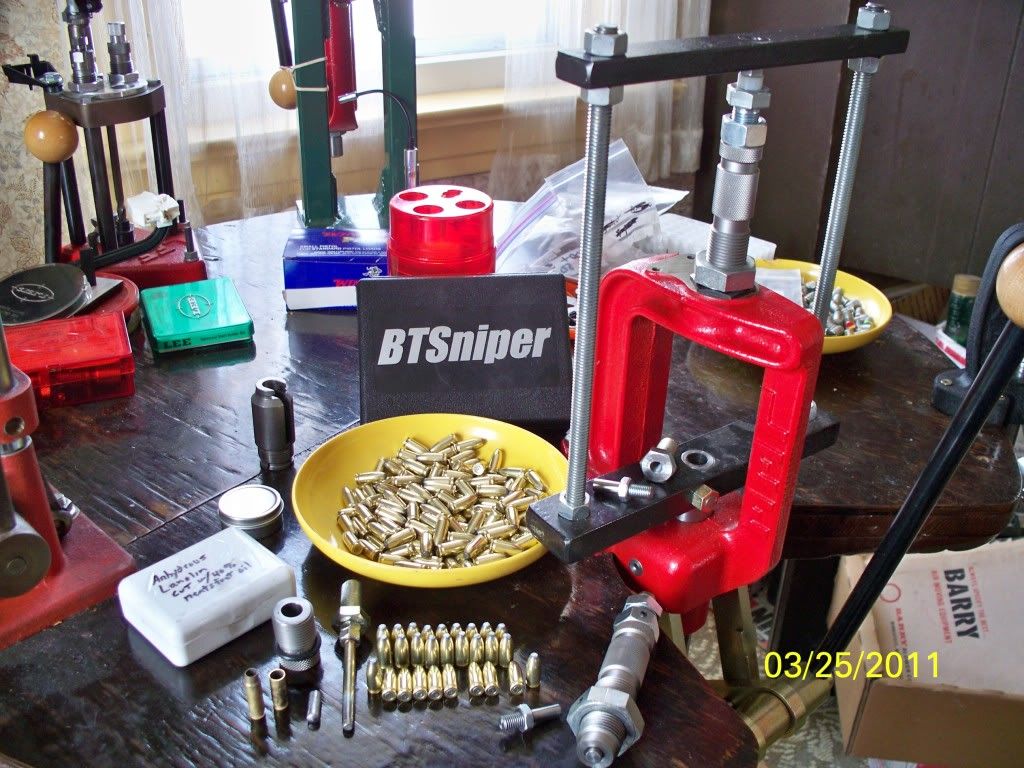 A video of a 30-cal core being seated and pointed. You’ll see it isn’t too demanding on the arm. -Lee www.singleactions.com"Chasing perfection five shots at a time" |
|
|
|
Post by cherokeetracker on Feb 3, 2016 15:54:59 GMT -5
I do hope that your set up is going to be using hydraulic presses. When I checked into this several years ago, It did not take much investigation into it, to discover that I wanted to stay away from any manual operations. I seem to always want to speed things up a bit too, So it seemed to me that I should have a minimum of three presses, Via hydraulic operation. That does not speed anything up. from what I have understood time is about the same. Saving some elbow grease was the main thing. Hydraulic presses are great for volume but not ideal for small precision bullet runs. At $7,000 to $10,000 the economics just aren’t there. Secondly, the real art in swaging is the feel and that’s achieved manually. Whether it be core sizing, core seating, or pointing, stroke pressure and hold time are pivotal. It may surprise you but the top BR bullet makers use converted o-presses from Redding and Lee. These conversions involve bolstered ram support and toggle arms and added leverage. One of the best base presses is the Lee Classic Cast. They're steel throughout and feature a heavy 1-1/8” ram. A video of a 30-cal core being seated and pointed. You’ll see it isn’t too demanding on the arm. -
Leewww.singleactions.com"Chasing perfection five shots at a time"
Those words that I made Bold is what I did not know. I learn something everytime I get on here. Plus that video was cool I never really thought about tilting the press for ergonomics sake. It was suggested that I do the work by hand when I was checking into this, but, I sometimes think I can do something different and better. You are right! I need to be reminded of the K.I.S.S. method sometimes.
Charles |
|
|
|
Post by Lee Martin on Feb 4, 2016 20:59:14 GMT -5
Borescopes – Part I ______________________________ There are three ways to assess your barrel. The first is pretty obvious. How does the gun perform on paper? The second is the dimensional consistency of the bore. Slugging it with a soft piece of sized lead will uncover abnormalities such as tight spots. Loose areas due to wear, particularity just past the throat are also a concern. The third way is visual inspection of the rifling end-to-end. This cannot be accomplished by holding it up to a light. Direct scrutiny of the metal is a must and that’s where borescopes come into play. Borescopes use an angled mirror, sealed illumination, and magnification inside a thin rod. These affix to a focusing eyepiece. Quality borescopes aren’t cheap but if you’re getting into benchrest I believe its money well spent. A lot of competitors go without them and do fine (or better than fine considering their HOF credentials). Hence, the BR crowd often consigns them to the “nice-to-have” bucket. I own one because thinking comes from not knowing (you’ve heard me say that before...you’ll hear me say it again). Two questions are always at the forefront of my gun maintenance: 1) Is the cleaning regiment effective? and 2) What’s the bore condition relative to what I’m seeing on target? Borescopes absolutely answer the first and provide insight into the second. My unit is a Hawkeye by the Gradient Lens Corporation. It features a 17” tube for .22-caliber and up. A mini-Maglite and adaptor are furnished along with an angled eyepiece with fine focus. The Hawkeye is a premium optical kit. They’re shipped in a lockable steel case and the scope is protected by a metal slip. You also get cleaning supplies.  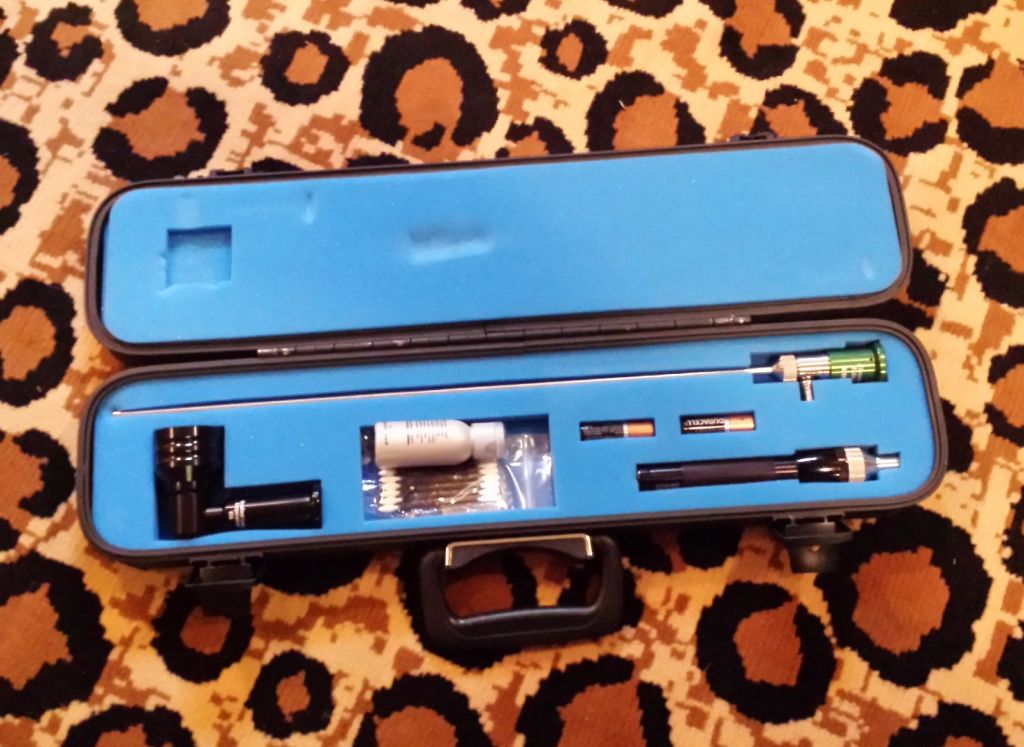 Focus eyepiece with the light inlet: 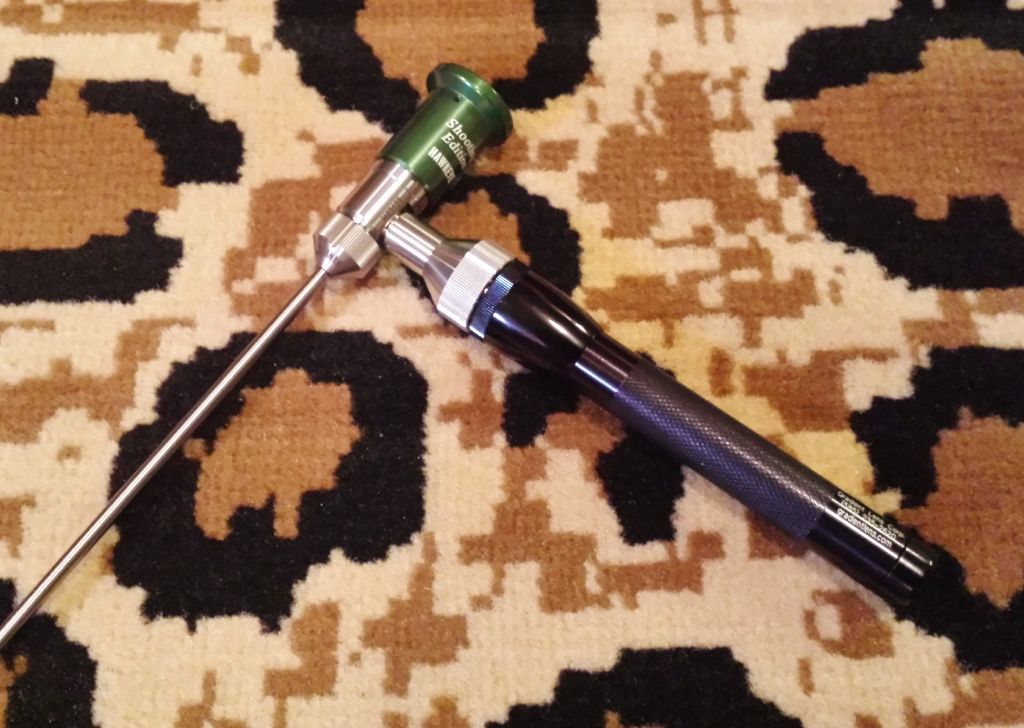 Angled-eyepiece installed: 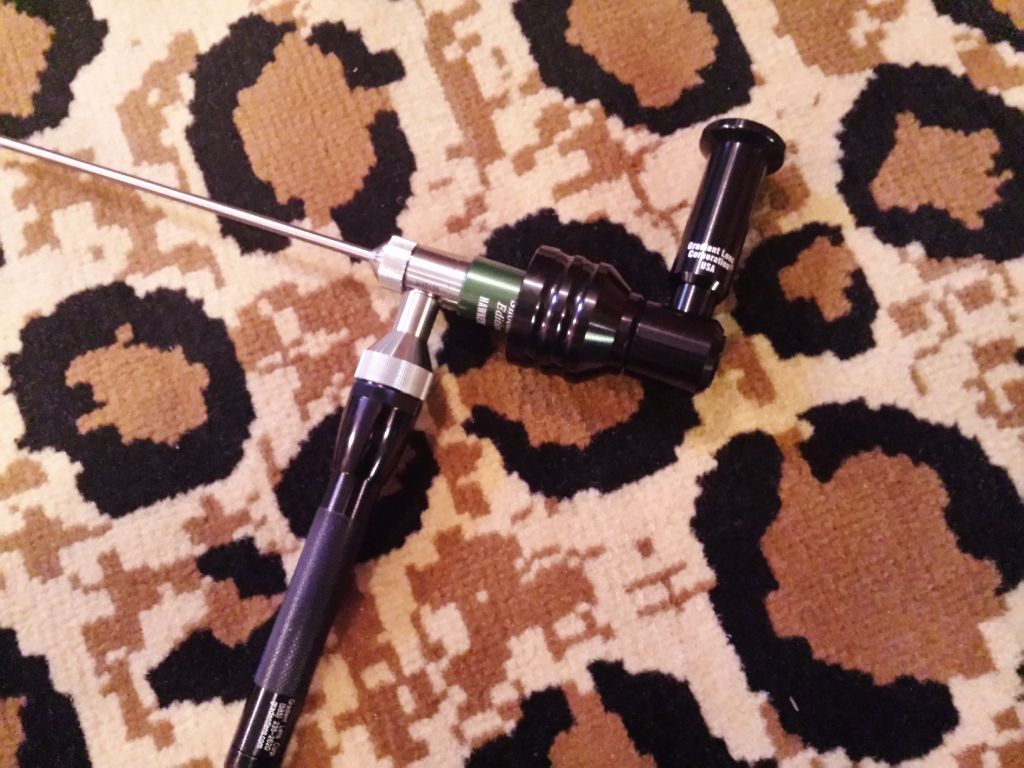 42 degree mirror, illuminated: 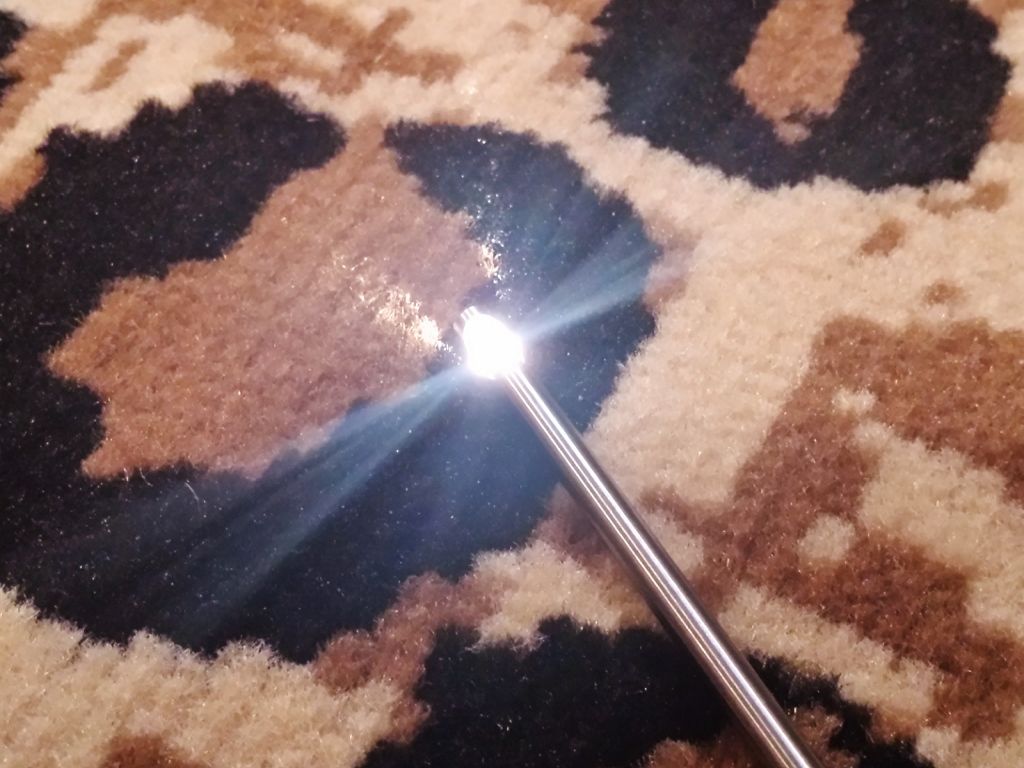 Before the blizzard of 2016 my PPC had a poor showing. A gun that was agg’ing in the low twos struggled to get out of the fours. What happened? Groups can open up for a myriad of reasons. Surely the load is a consideration. Let’s shelve that one for now, concentrating more on mechanical attributes. I say that because I tried a bunch of tunes previously stellar in those conditions. Next I checked the rings, scope base, and main action bolts. All were tight. That leaves the barrel, the scope, and the ignition mechanism. No external issues were found with the scope like a parallax shift or loose eye piece. The barrel and firing pin would have to be studied back at our shop. If it’s not ignition related I suspect the barrel is getting tired or the scope is wandering. Let’s hope it isn’t the latter. The whole reason for buying a March was to avoid POA problems. I’m inclined to think it’s the barrel though. Mine is at 850 rounds which is getting up there. Of course you can't predict barrel life. Some lose their competitive edge under 500 shots while others are healthy to 2,000. Just the same, 700 to 1,000 seems to be the average and I’m in that window. In Borescopes Part II I’ll discuss: • Operating the Hawkeye • Areas of the barrel we checked (neck to lead edge, the lead and throat, lands, grooves, and the crown) • What are we looking for? And what do those findings mean? • Analysis of the results. What’s next for this Shilen? This Saturday I’m headed back to the range. I’ll shoot the barrel as is, re-tune onsite, and take my dad’s 36x Leupold. It never hurts to try the gun with different glass. Or maybe that day in the 4’s was all on the shooter. We’ll know soon enough. -Lee www.singleactions.com"Chasing perfection five shots at a time" |
|
|
|
Post by Markbo on Feb 4, 2016 21:22:31 GMT -5
Part II, part II!!!
|
|
|
|
Post by Lee Martin on Feb 8, 2016 19:17:05 GMT -5
Borescopes – Part II _____________________________ Borescopes are fairly easy to use. Step one is to clean the barrel, removing any oils or solvents that could get on the mirror. Next our bore guide is similarly swabbed and inserted into the action. The Maglite it turned on and the rod is moved to the desired location. I typically start at the neck and work my way forward. The knurled knob seen just ahead of the eyepiece is rotated to give a 360 degree view. 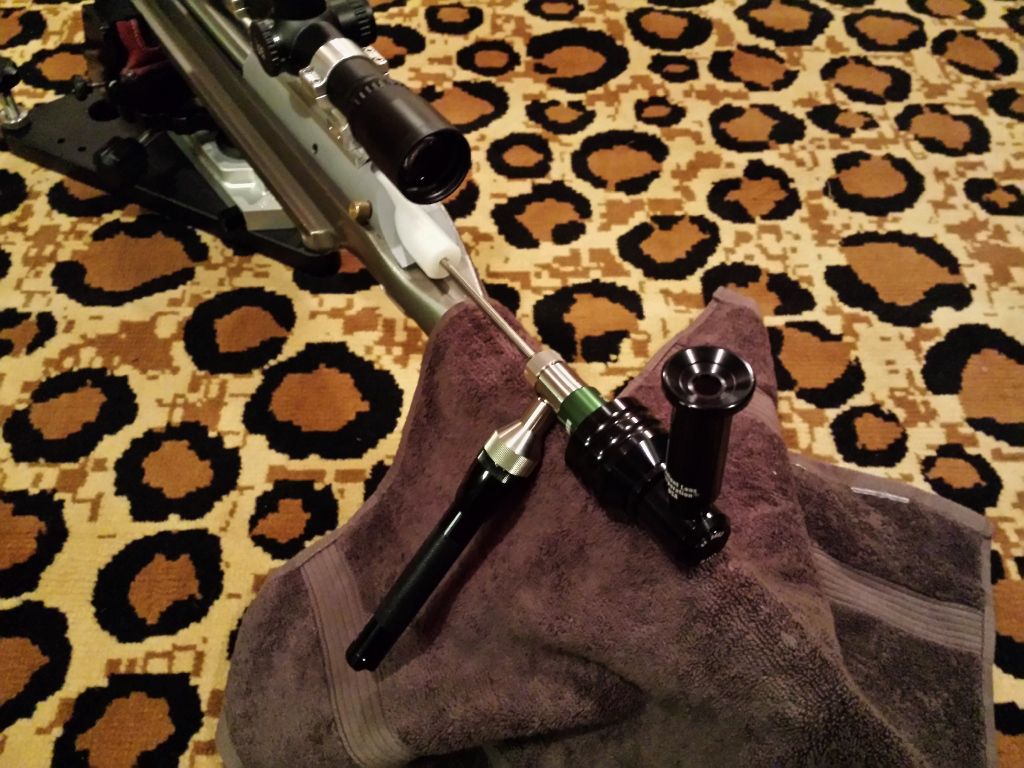 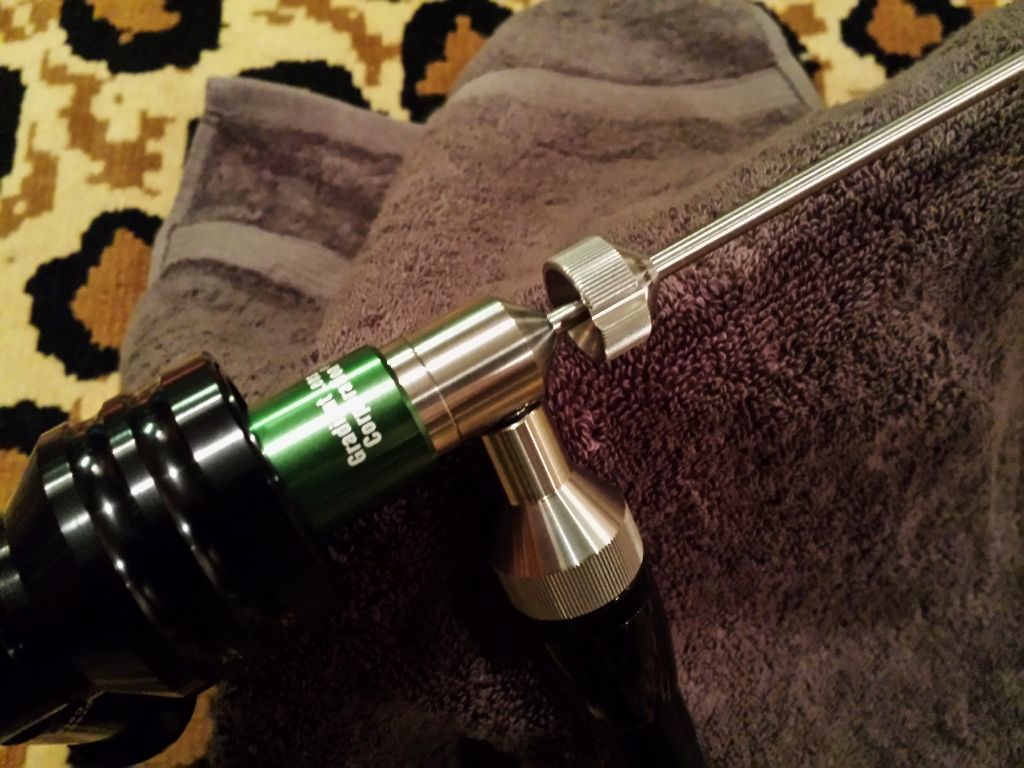 Here’s what I found after borescoping my Shilen: • There is only faint erosion at the neck to lead edge. And by faint I’m talking surface speckles. No deep craters were observed • The 1.5 degree lead is smooth. I expected more wear in this section, particularly some coarseness. But after 850 shots it's intact • All six lands are well defined. The corners are crisp, the tops still show evidence of the lapping process • The grooves were fine. Abrasions are present but they’re superficial • There isn’t any copper fouling or carbon build-up. I have Butch’s, Kroil, and Iosso to thank for that • The crown is sharp. I did not slug the barrel to test concentricity. You’ll see why in a minute. Pictures of the bore – unfortunately I don’t have the camera attachment for my Hawkeye. They run $900 plus another $400 for the USB connector and software. In lieu of that I’ll share some photos of borescope shots found elsewhere: Pristine rifling: 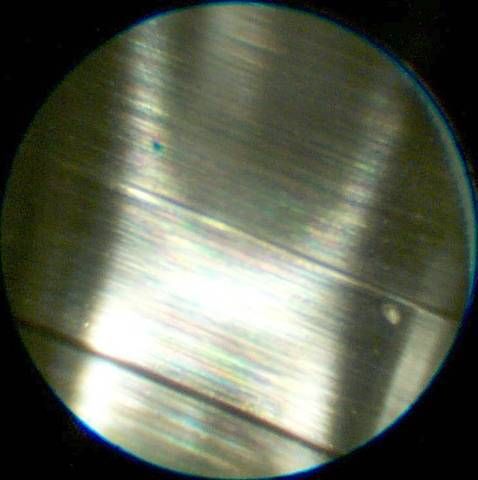 Copper fouling:  Lead wear with mild carbon fouling: 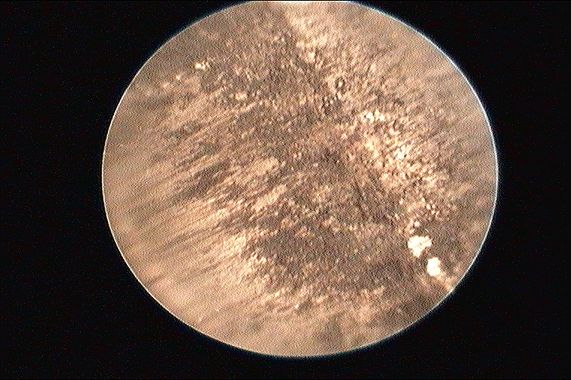 Heavy throat erosion: 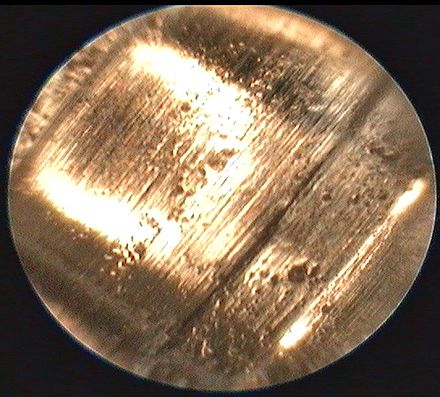 Based on what the scope showed (or didn’t show) I don’t believe the barrel is to blame. I still planned to slug it to check for irregularities. Could the Iosso have lapped a thou or two off the lands? Probably not but I wanted to rule out the possiblity. Then last Thursday I de-primed the cases from a few Saturdays ago. Shame on me for not inspecting them sooner but the primer hits were light. Using a homemade firing pin gauge, protrusion mic’d a lowly 0.012”. For reference, we always set them to 0.055”. It turns out we forgot to Locktite the cocking piece set-screw. Over time the pin was pushed back, causing inconsistent ignition. What a relief. No more worries over a $2,300 scope wandering. We reset the pin, Locktited the retainer, and reassembled the bolt. Firing pin protrusion gauge:  The first group fired on Saturday went 0.171” (27.7 of LT-32, 0.003” off jam) 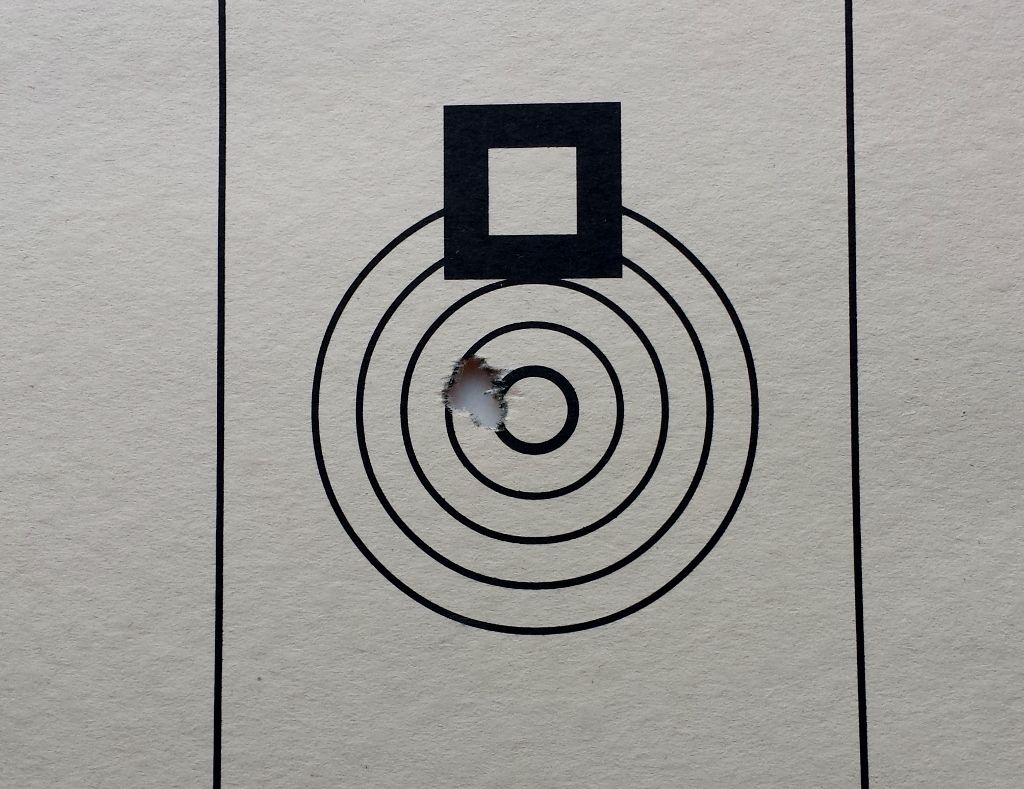 0.414" - 0.243" = 0.171" 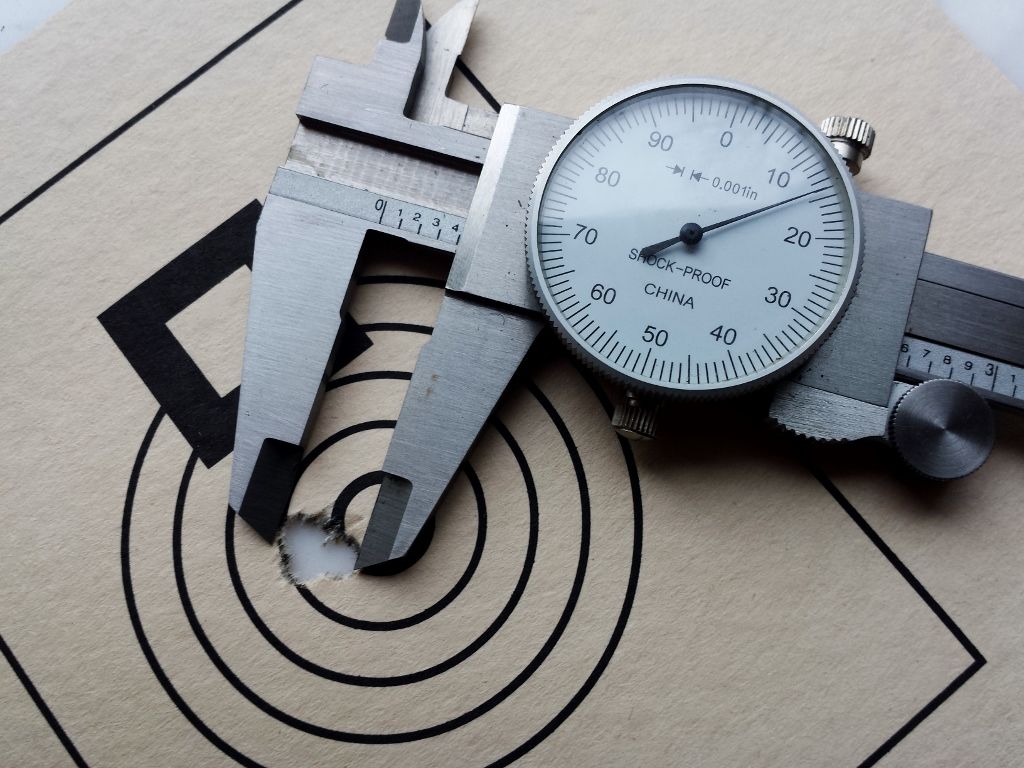 The other seven groups were 0.157", 0.196", 0.199", 0.206”, 0.213", 0.239", and 0.278” (order of smallest to largest, not the order shot). No question, this was a good learning experience. -Lee www.singleactions.com"Chasing perfection five shots at a time" |
|
|
|
Post by squawberryman on Feb 8, 2016 20:00:21 GMT -5
Lee has it always been a given that barrel harmonics were so closely monitored? If not, what year is it agreed they came into play and what did the group sizes go from-to? A different way to look at this question is like the guy that invented the rubber worm for bass fishing, did someone just take the BR world by storm one dat after "getting it"?
|
|
ProGun
.30 Stingray

Posts: 246
|
Post by ProGun on Feb 8, 2016 22:07:18 GMT -5
Whewww!
|
|